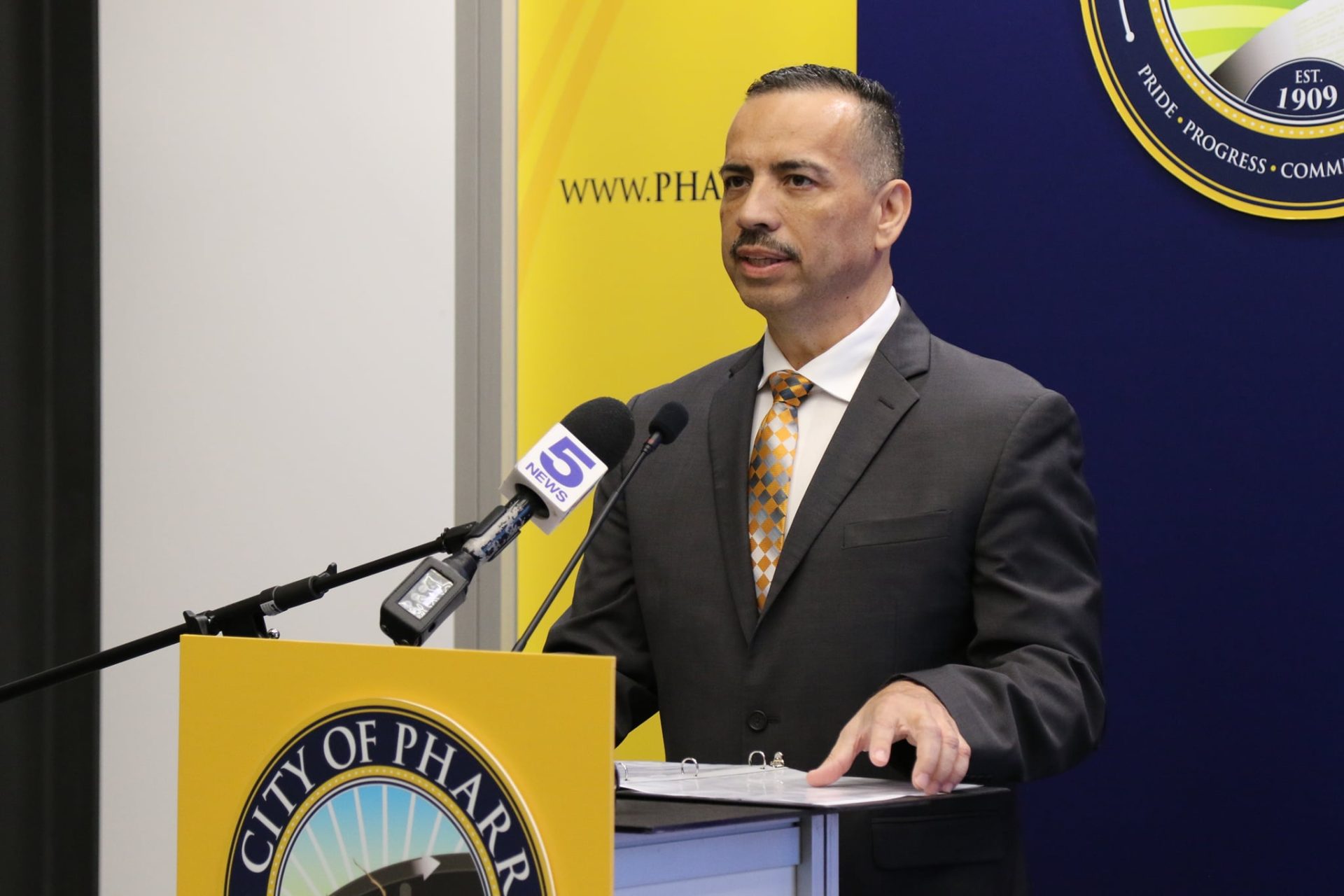|
Only have a minute? Listen instead
Getting your Trinity Audio player ready...
|
Pharr-San Juan-Alamo ISD trustees voted Monday to approve a 10-year, $30 million-plus interlocal agreement with the city of Pharr that the district says will provide broadband internet service to more than 13,900 students.
Discussing the project Monday, trustees used a $36 million total cost to discuss the project, though interim Superintendent Alejandro Elias told The Monitor on Tuesday that the cost will actually be $38 million, broken down into equal installments paid to the city over 10 years.
The cost breaks down to $50 per household per month, which Elias says will give over 4,600 households in Pharr access to 1 gigabyte per second internet connectivity which the district will pay the city for.
That’s not all: The district is currently looking at significantly expanding that internet service in the near future.
“We’re looking at phase two, for San Juan and Alamo,” Elias said. “In those, that’s about another excess of 3,800 to 4,000 households.”
It’s not clear whether that $50 price applies to households in those towns. If it does, the district could be looking at plugging well over $62 million into the project.
It’s hard to understate the magnitude of that investment.
School districts, counties and cities across the Valley invested heavily in bridging the digital divide in response to the pandemic, using millions of dollars to pay for electronic devices, hot spots and community access points for Wi-Fi.
PSJA’s $38 million investment dwarfs most — if not all — of those investments.
Donna ISD, for example, received national attention for a Wi-Fi tower project billed as a firm solution to its students’ connectivity issues — though that project had criticisms after the fact.
In all, that notably aggressive approach had a price tag of only $3.7 million.
Elias says, among other benefits, locking in a fee of $50 per household is a savvy move.
“I see it as a savings,” he said. “If we didn’t have that contract, in five years, what if it comes out to $100 per household?”
The district entered into negotiations with the city about the service in December.
At the time, the city’s TeamPharr.net project was worth some $40 million; years in the making, servicing 24,000 residential accounts and slated to feature some 398 miles of fiber optic cable.
It’s a project the city has taken pride in.
“There’s no question, this is truly a human investment that you’re doing,” Pharr Mayor Ambrosio Hernandez told trustees Monday.

Hernandez characterized pandemic efforts like hotspots amounted to a “drop in the bucket” in addressing the digital divide, and said that the broadband program is an investment that will help the community for generations.
Trustees largely complimented the agreement. Stories of students doing schoolwork at restaurants or coffee shops because they lack internet at home came up a couple of times.
“We are really looking at students that sometimes spend their time at Burger King, Starbucks, trying to get Wi-Fi. Why put them through the stress?” Elias told the board. “If we’re offering all these courses — as an early college, as CaTE — we want our students to succeed. So I don’t think there’s really a price, if the district can do it as far as what we can do for our students that are out there at risk. And we can provide the service — I think that’s better than having a hot spot that really was putting our stress on our students, on our parents.”
Board President Cynthia Gutierrez described it as a way to bolster scores for the district and a good recruiting tool.
“Students that live in neighboring districts or that are going to charter schools may want to come to our district to take advantage of this opportunity,” she said.
The district did, in fact, issue a news release on the broadband that also noted enrollment for next year is still open.
The Zambrano brothers, who’ve generally been dissenting votes on the board, did not attend the meeting.
Trustee Jesus “Jesse” Vela expressed the most concern among trustees Tuesday.
An unbudgeted expense, the first $3.6 million appears likely to come out of the district’s fund balance.
“You know, I get a little concerned when we are going to take money from our fund balance,” he said.
Elias said federal ESSER money — the Elementary and Secondary School Emergency Relief Fund — could set off at least some of that cost, which Vela also expressed concern over.
“As long as we comply with the federal requirements of ESSER and the use, because at the end of this year and going into next year, I get concerned that we’ll get audited by the feds, because we’re accountable for ESSER funds,” he said.




